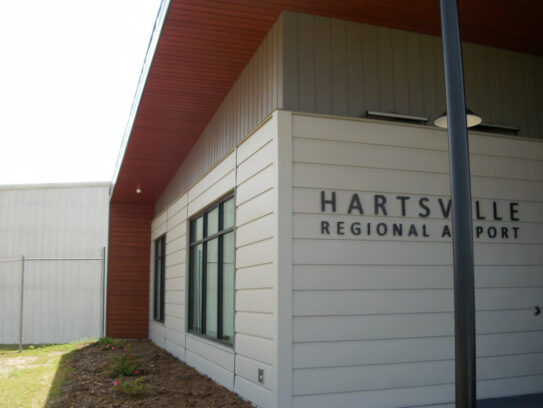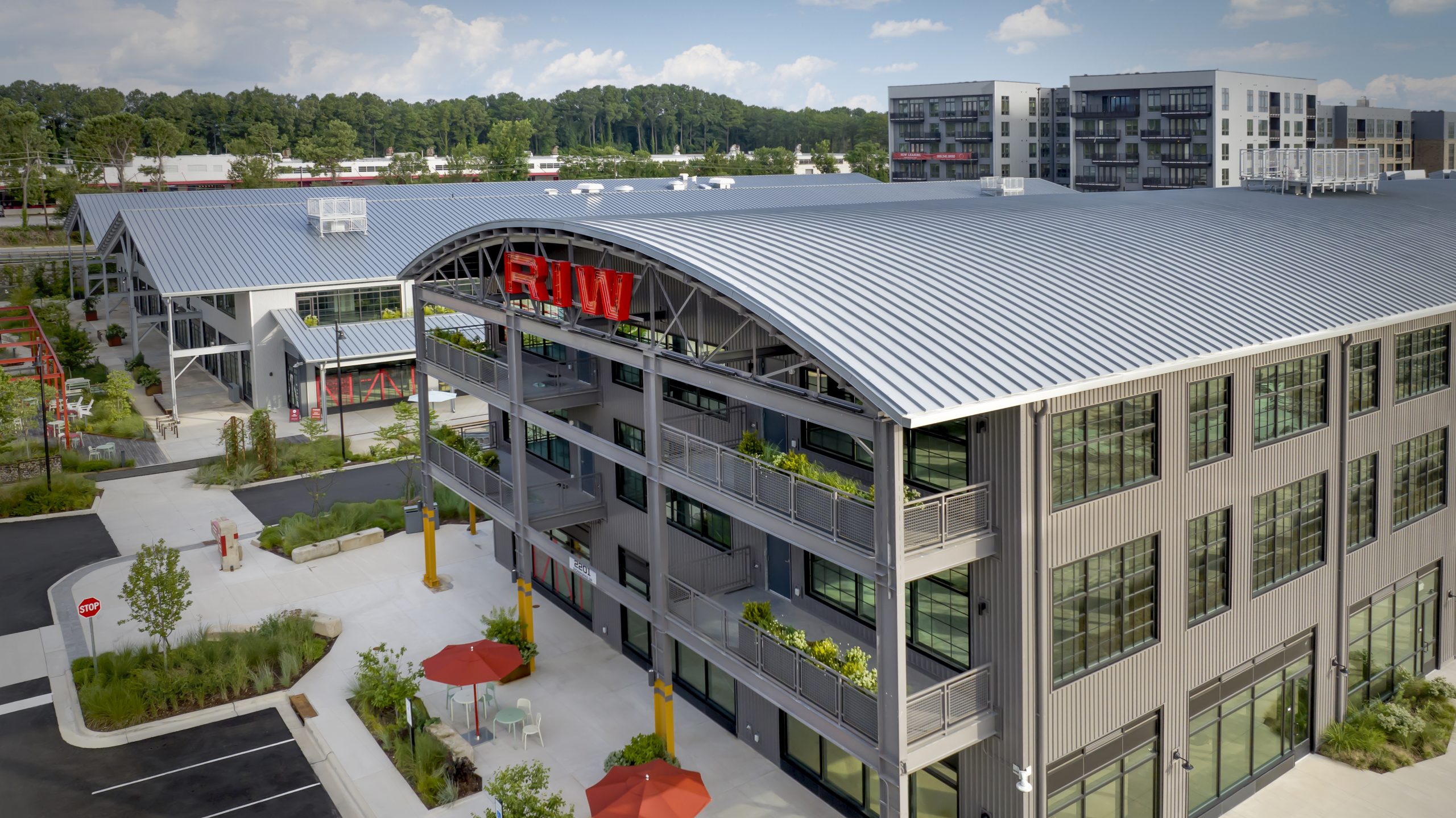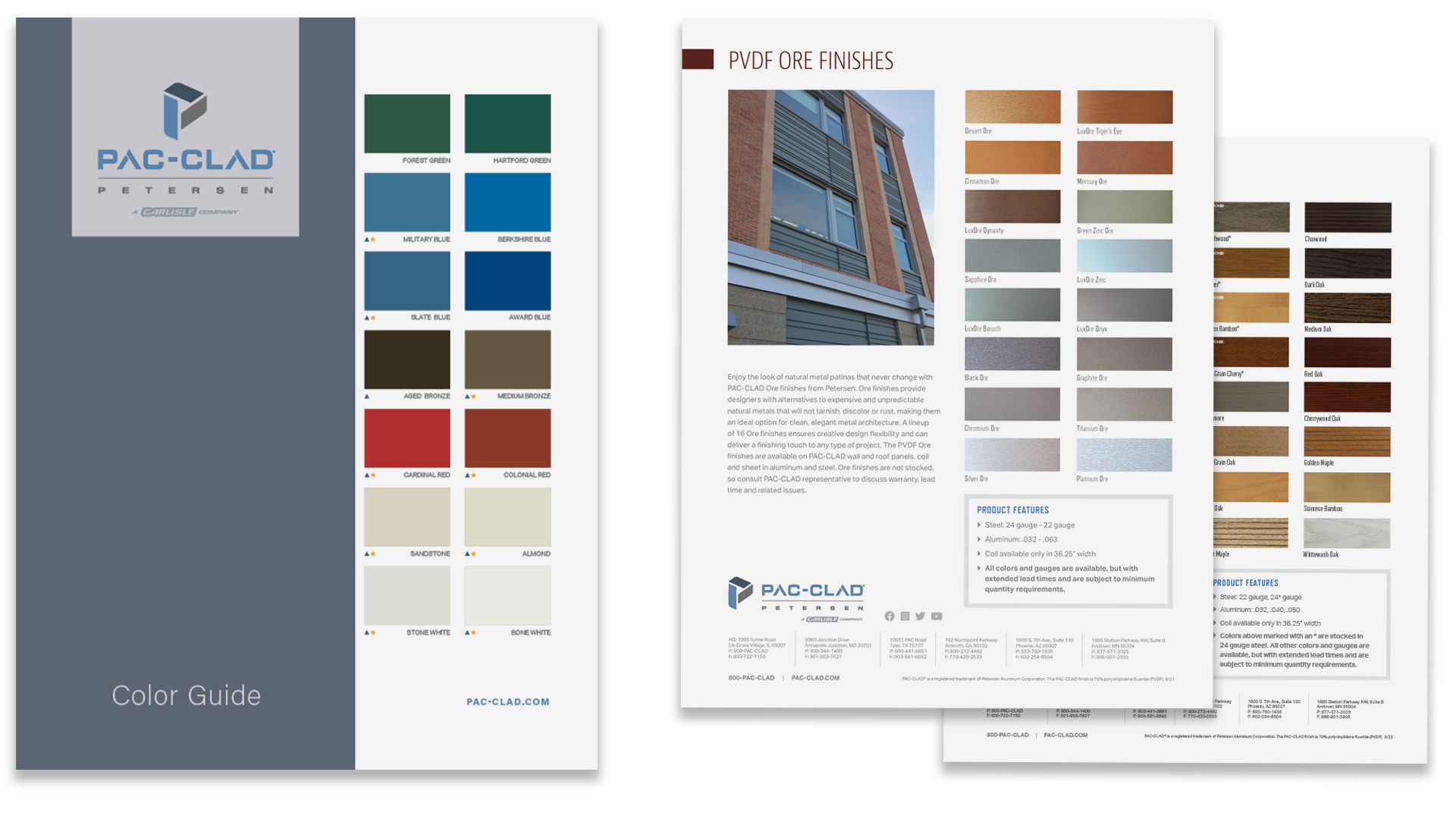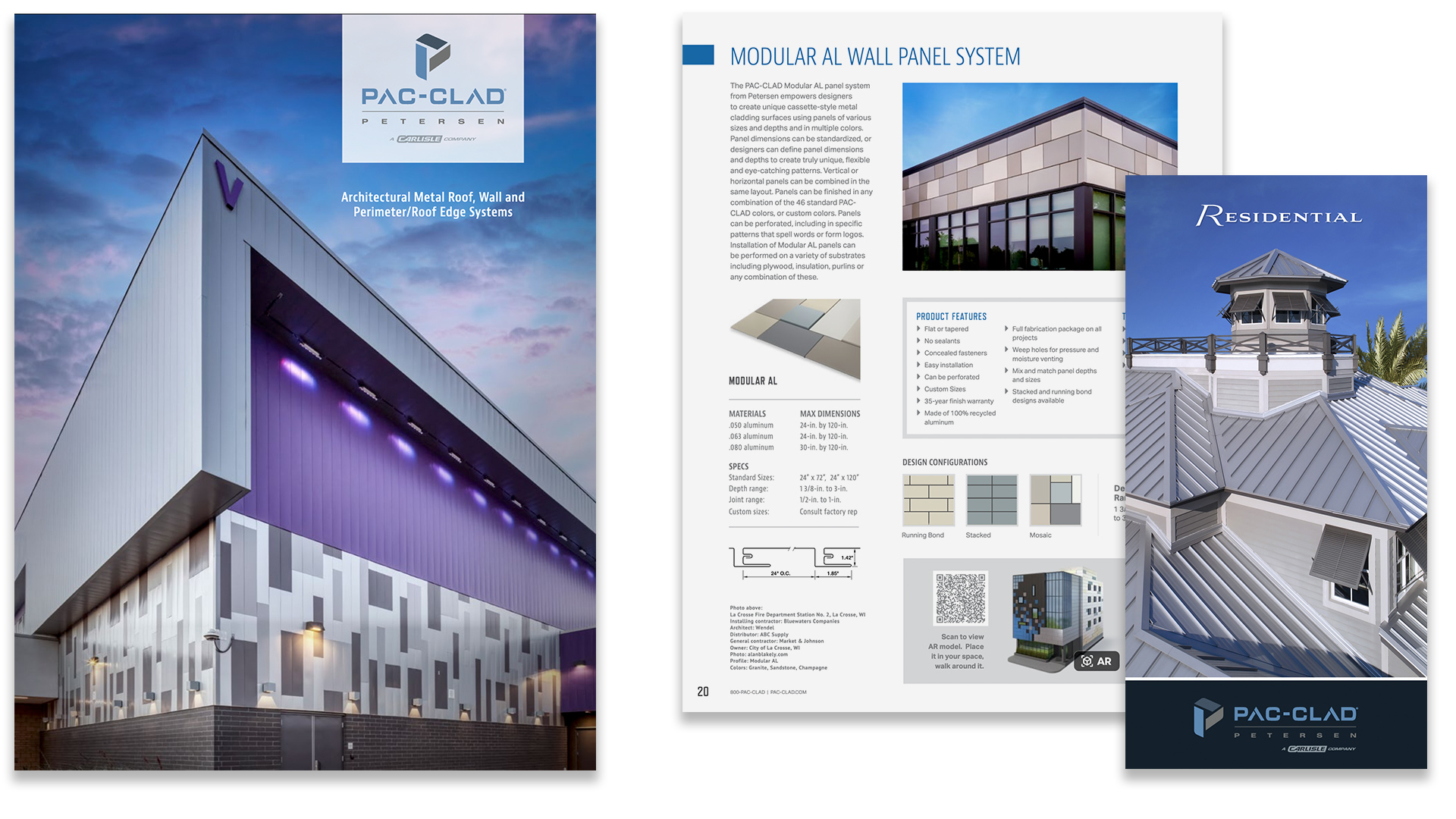Metal panels help roof-raising design of new regional airport terminal fly high
Regional airports don’t receive much attention, but they can provide important services for the smaller communities where they’re located. They might not offer regular commercial flights, but they can be important transportation hubs for businesses that own their own aircraft. They also can aid shipments of medical supplies and devices to local hospitals when emergencies occur. And, they can help build a talent pool of pilots and other aeronautical professionals, as many host flight schools and maintenance-service providers to keep local planes up and running.
A new terminal at just such an airport in Hartsville, S.C., is raising that facility’s profile, with a design that makes effective – and economical – use of metal wall and roofing panels to create a clean-lined and contemporary structure. Hartsville, with a population of just less than 8,000, is located near the center of South Carolina, about 30 minutes from the nearest larger city, Florence. While the Florence Regional Airport offers shuttle flights to Charlotte, N.C.’s international airport, travelers otherwise face a 2-hour drive to either Charlotte or Columbia, S.C. So, the Hartsville Regional Airport offers options closer to home.
The facility’s recently completed terminal building includes a waiting area, pilot’s lounge, reception space and a conference room. Architects with the Charleston, S.C.-based The Middleton Group designed the structure with expansive glass and a cantilevered roof intended to create a feeling of “taking flight,” in the firm’s own words.
While the main waiting area is defined by glass curtainwall, the main structure of the terminal is clad in a mix of metal-panel profiles, and metal also outlines the angled roofline, emphasizing its slope. The architects specified three different panel types – and profiles – from Petersen’s PAC-CLAD lineup to pack a lot of visual punch in a small package. These panels include Granite-finish Reveal panels installed horizontally to define the main body of the terminal, topped by vertical, Graphite-finish Reveal panels above, angling up to emphasize the sloped rise of the cantilevered roof. In back, standing-seam Graphite Snap-Clad panels – more commonly used for roofing – cover the building’s rear elevation. Out of sight of these images, the building’s roofing features Petersen’s Tite-Loc panels. Monarch Roofing in Myrtle Beach, S.C., handled the installation of all these products.














